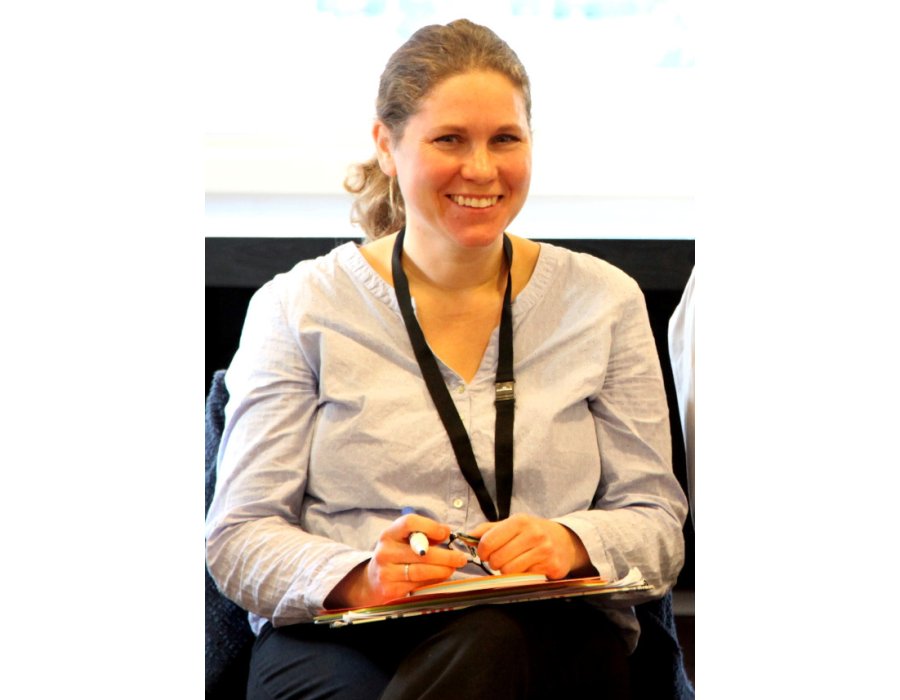Meet TRAFIG Team member Simone Christ
Meet Simone Christ, who managed the TRAFIG fieldwork in Germany implemented by the Bonn International Center for Conflict Studies (BICC), and find out more about her experience, her motivation and her work in the TRAFIG project.
Four years ago, we at BICC, in collaboration with our partners, responded to a call by the European Union asking for alternative solutions and innovative ideas for tackling protracted displacement. In our previous research projects on displacement, we saw how people relied on their own resources—particularly connectivity and mobility—to escape protracted displacement despite adverse and constraining conditions. This is where we wanted to start: How can displaced people use mobility and connectivity as resources to get out of the precarious living conditions and the enduring situation of limbo they experience in protracted displacement? Four years later, I can now look at these aspects from the perspective of refugees in Germany, as I led the German case study (the results of which can be found in TRAFIG working paper no. 10 and TRAFIG practice note no. 10).

In Germany, the topic of integration dominates the political and public discourse on refugees. Clearly, integration is a fundamental aspect, which I investigated in earlier research, and which I understand as enabling equal participation in society. Nevertheless, in the everyday life of refugees in Germany, integration is only one side of the coin. It is a significant finding of our research that transnational connectivity, the other side of the coin, is also a central part of refugee’s everyday life. The relationships with their families and friends who live in other places, who are sometimes still in Syria or Eritrea or who are stuck in a country of first reception like Jordan or Ethiopia, are just as important to them as their local relations in Germany. Our research also shows that mobility towards Europe is a chance for refugees to exit protracted displacement. Here, we have seen that family connections play a significant role in the mobility decisions, specific trajectories and conditions while they were fleeing. It is now time that transnational connectivity is reflected in current political and social debates on displacement.
I approached the research questions from my perspective as a social anthropologist. As a social anthropologist, I am always interested in understanding the perspective of the people themselves, the so-called emic perspective. I want to understand how people live their lives under conditions of displacement and give a voice to their stories. I am aware of the paternalistic connotation of giving voice to someone, but I believe that people feel heard when they tell their stories. When listening to them, I also want to relate their experiences to academic discussions. It is fascinating to bring theoretical concepts like figurations to life and to test them through one’s own empirical research.
Even though I am committed to understanding how people live under conditions of displacement, I also know that I will never be able to fully understand them. Never will I— who grew up and live in very privileged conditions seen on a global scale—be able to truly understand what it means to have to leave one's family behind, embark on a dangerous journey, endure existential and traumatic situations and to be separated from one's loved ones for an uncertain period of time.
As social scientists, we are aware of the subjectivities of research. Social research can never be objective, a lesson which forced migration studies in particular tell us. It is nearly impossible to be a neutral observer when listening to the stories of our research participants. Many of the interviews make me feel sad and angry at the same time. A woman from Eritrea told us about her detention in a Libyan camp, a man from West Africa told us about how he endured fear of death on the Mediterranean Sea. We became aware of the enormous psychological burden which lies on the shoulders of a person who must decide which family member can benefit from a safe pathway to Europe and who can not. Moreover, the suffering of a mother from Eritrea who has been waiting in Germany for six years to be reunited with her two under-age children in Ethiopia is hard to bear. Instead of being safe in Germany, if only the bureaucratic procedure had been faster, the children are now threatened by the violent conflict in the Tigray region. This is not the only case where I felt that people have been demoralised by bureaucratic procedures of the authorities involved.
When listing to the stories of people who fled violent conflict or got out of protracted displacement, it is hard to understand that the options for legal and safe pathways are more or less negligible. Our research shows how we can draw on transnational connections of refugees to significantly expand legal and safe pathways.
By Simone Christ
The views and opinions expressed in this blog do not necessarily reflect the opinion of the TRAFIG Consortium or the European Commission (EC). TRAFIG is not responsible for any use that may be made of the information contained therein.